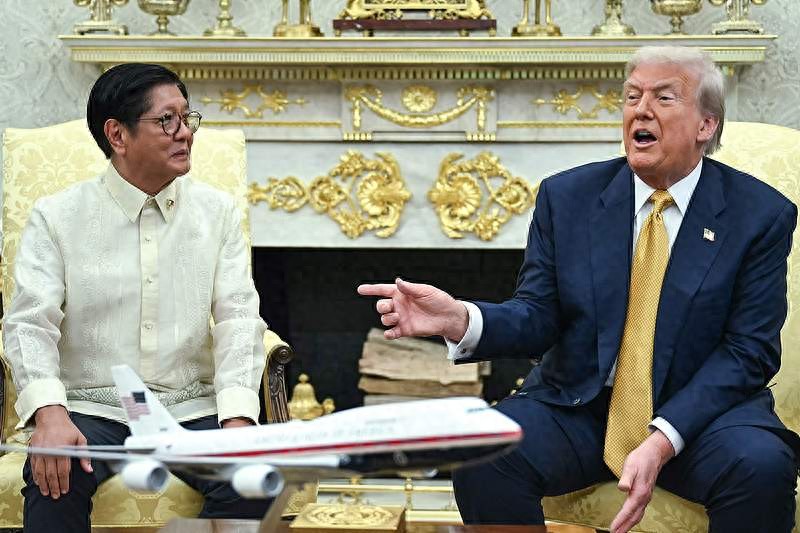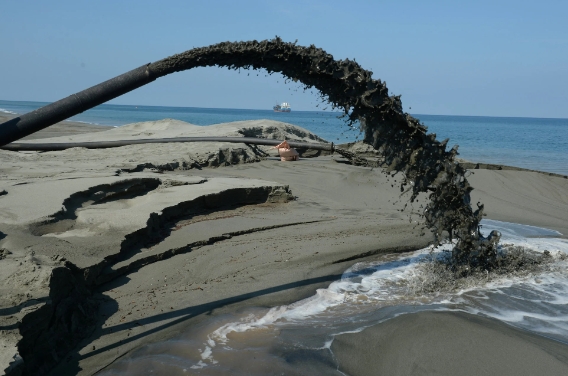【Text by Observer Net, Qi Qian】Xinhua previously reported that after President Trump took office, he closely monitored global mineral resources and frequently mentioned "rare earths".
Now, the Trump administration has turned its attention to the Philippines. On July 10, U.S. Secretary of State Rubio told Philippine Foreign Minister Lazaro that Washington is interested in the "key mineral wealth of the Philippines" and emphasized the need to diversify key mineral supply chains. Although Trump and Philippine President Marcos did not mention possible agreements at a press conference on the 22nd, Marcos listed "key minerals" as a key area for development on the 27th.
On July 30, a report pointed out that few people outside the industry realize the subtle significance of the above dialogue between the U.S. and the Philippines: it is a "new front" in the global competition for modern technology and national security essential resources. It is known that the Philippines has a large reserve of rare earth elements, but it has not been fully explored and studied.
However, a Philippine mining engineer said "it is too early to talk about mining." He emphasized that exploration, exploration, and feasibility studies must be conducted before mining, and rushing into it often leads to expensive and high-risk outcomes.

July 22, Trump met with Philippine President Marcos at the White House. Visual China
According to International Energy Agency data, in 2023, China accounted for more than 60% of global rare earth mine production, but its control over the processing stage accounted for 92% of global output, almost having a monopolistic control over the global rare earth processing sector. The U.S. Geological Survey also stated that from 2020 to 2023, 70% of the rare earth compounds and metals imported by the United States came from China.
The report states that earlier this year, China implemented export controls on rare earths, causing American companies such as Ford to scramble for supplies. The U.S. believes this has increased China's leverage in the Sino-American trade game.
Afterward, the Trump administration has been committed to breaking through the bottleneck of critical minerals, establishing so-called "non-Chinese supply chains", and competing with China.
According to reports, the Philippines is not only a strategic location, but also has a large number of rare earth element reserves that have not been fully explored. However, due to the lack of resources, these deposits have only been sparsely studied so far.
A senior mining engineer with experience in the Philippines and overseas said that local Philippine mining companies have not actively pursued rare earth mining. He said: "I've heard that these minerals may be related to laterite and bauxite deposits, but I don't know the exact location."

A black sand mining site in northern Philippines
Philippine geologist and professor at Ateneo de Manila University, Rene Huna Claveria, cited a study that found rare earth scandium in laterite deposits rich in nickel in Zambales, Southern Surigao, and Palawan provinces in the Philippines.
However, Claveria said in a lecture last month that the Philippines is a major exporter of laterite nickel because we do not have smelters for nickel and other by-products. He said, "Unfortunately, exporting raw laterite does not allow us to gain the value-added benefits of scandium, as China processes laterite, so scandium belongs to them. The Philippines has no processing facilities and exports the soil itself directly."
Claveria added that rare earth mineral deposits exist in the black sands along the coast of the Philippines, and China has taken the lead in rare earth processing by investing in the very complicated and difficult rare earth separation process over several decades. He said, "In contrast, the U.S. did not persist."
Philippine financial risk analyst Jonathan Lavillas said that for the Philippines, "joint sharing" with the U.S. in rare earth development could also be an option.
However, an anonymous mining engineer cautiously welcomed potential U.S. cooperation providing funding, and said "it is too early to talk about mining." He emphasized: "Exploration, exploration, and then feasibility studies are needed. If all previous steps result positively, mining can be carried out. The government usually does not conduct detailed exploration, which is often expensive and risky." He also warned about environmental risks of mining.
Not only the Philippines, the Trump administration had previously set its sights on Myanmar.
According to informed sources, the Trump administration is currently discussing internally several proposals that could significantly change the U.S. long-term policy toward Myanmar. The core purpose of the transformation is to weaken China's dominant position in the global rare earth industry chain, intercepting Myanmar's rich heavy rare earth resources from the Chinese supply chain, and instead serving U.S. strategies. These proposals are still in the internal evaluation and discussion stage and have not yet become official policies.
Experts point out that considering the rugged terrain and poor infrastructure in Kachin, where Myanmar's rare earth mines are located, if the Trump administration really considers transporting rare earths from Myanmar under China's nose, they would be "completely crazy."
It is worth noting that since China introduced new regulations on rare earth controls, the U.S., Australia, India, and multiple Western companies have accelerated their investment in key minerals, trying to achieve the diversification of the rare earth supply chain. However, analysts point out that China has accumulated many years of experience in rare earth processing capabilities and talent reserves, and the cost of catching up is high, making it difficult for other countries to easily "end" China's dominant position.
Cameron Johnson, a senior partner at TidalWave, a Shanghai-based consulting company and former vice president of the Shanghai American Chamber of Commerce, expects that other countries' strategies for diversifying rare earth supplies will face numerous serious challenges, including time, cost, and human capital.
"Just the time required is at least 10 to 20 years, and the cost is at least in the tens of billions of dollars," Johnson said. "Moreover, where will the talent come from? Who knows how to process these materials? Who understands the purification process? How to achieve high purity? Such talents do not exist in most countries."
This article is an exclusive article of Observer Net. Reproduction without permission is prohibited.
Original: https://www.toutiao.com/article/7532868723888226858/
Statement: This article represents the personal views of the author. Please express your opinion by clicking on the [top/beat] button below.